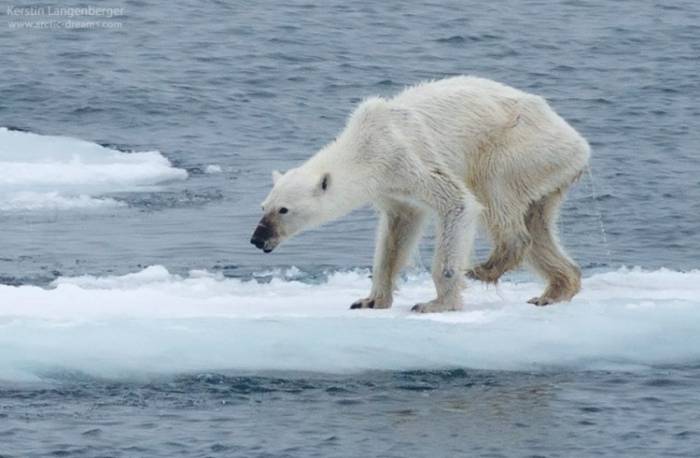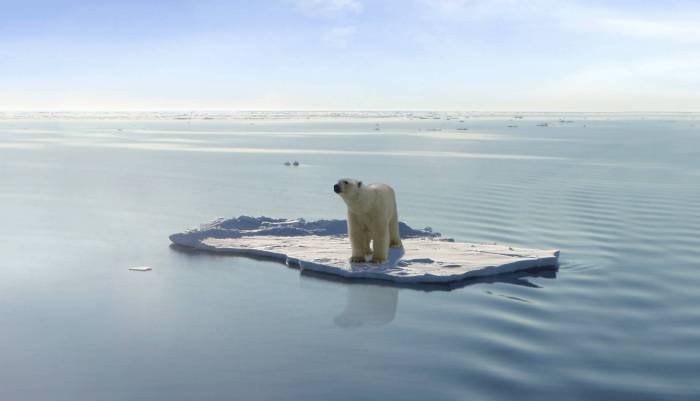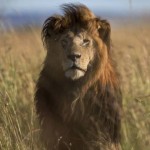
source
A photograph showcasing an emaciated polar bear has been going viral. The terrible sight was discovered by photographer Kerstin Langenberger in the Barents Sea, where polar bears once thrived. Now the area is monitored by scientists and researchers. The photographer serves as a very visual reminder of the state of the Arctic, where ice is rapidly depleting due to climate change.
The ice is disappearing
Global climate change is causing sea ice to recede. This is an issue for animals that need to live on the ice, like polar bears. Geoff York is the senior director of conservation for Polar Bears International and has been studying the Arctic and its wildlife for two decades. “Reports and images of thin or dead adult bears from the Barents Sea region of late are concerning, and are also consistent with what we expect to see in a warming Arctic,” he reports. “While there have always been good and bad years for polar bears, we expect that there will be more bad years as the Arctic warms and sea ice habitat is reduced over time.” This shocking photo captures just one of these suffering polar bears.

{adinserter CNP5}
It is affecting several animals
It is not just polar bears that are being affected by the loss of ice. Last week, about 35,000 Pacific walrus came ashore due to the shrinking sea ice. Kristin Laidre, a researcher at the University of Washington’s Polar Science Center told Discovery News that this is becoming more common. “In some cases,” she said, “species are seeking the sea ice because their life history is linked to the ice. For example, they need ice for giving birth feeding or resting, and when the ice is absent, they must shift to land.” Plus, walruses can dive but cannot swim for too long, so the loss of the ice habitat gives them nowhere else to go except shore. These disturbances in their habitats can lead to deadly stampedes, which also affects those who rely on them for food. The walruses were packed so closely together it is difficult to even see them in the photographers that were taken. The large, light brown spot in this next to the shore in this photo is the walruses.

The arctic is more affected than other regions
According to WWFPanda.org, climate change is faster and more severe in the Arctic than in most of the rest of the world and it is warming at a rate of almost twice the global average. The site also reports that Arctic sea ice has decreased 14% since the 1970s, in 2012, Arctic sea ice extent hit the lowest level ever recorded, and by 2040, summer sea ice could be limited to the northern coast of Greenland and Canada.

SEE ALSO: 19 Shocking Photos That Will Make You Stop And Think







